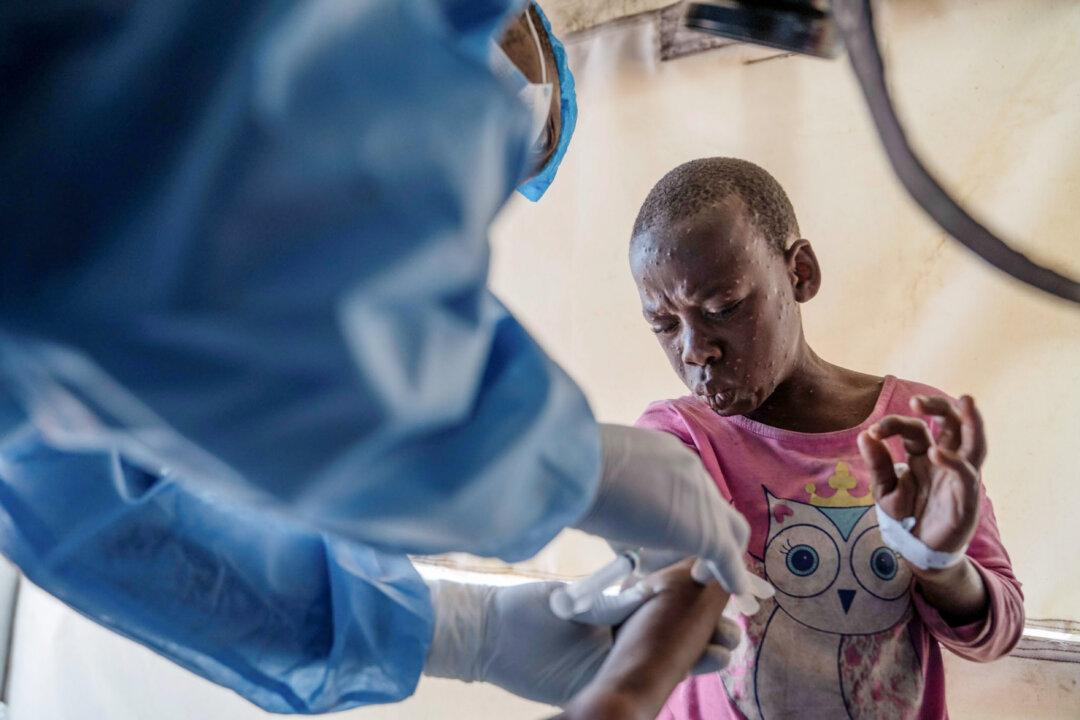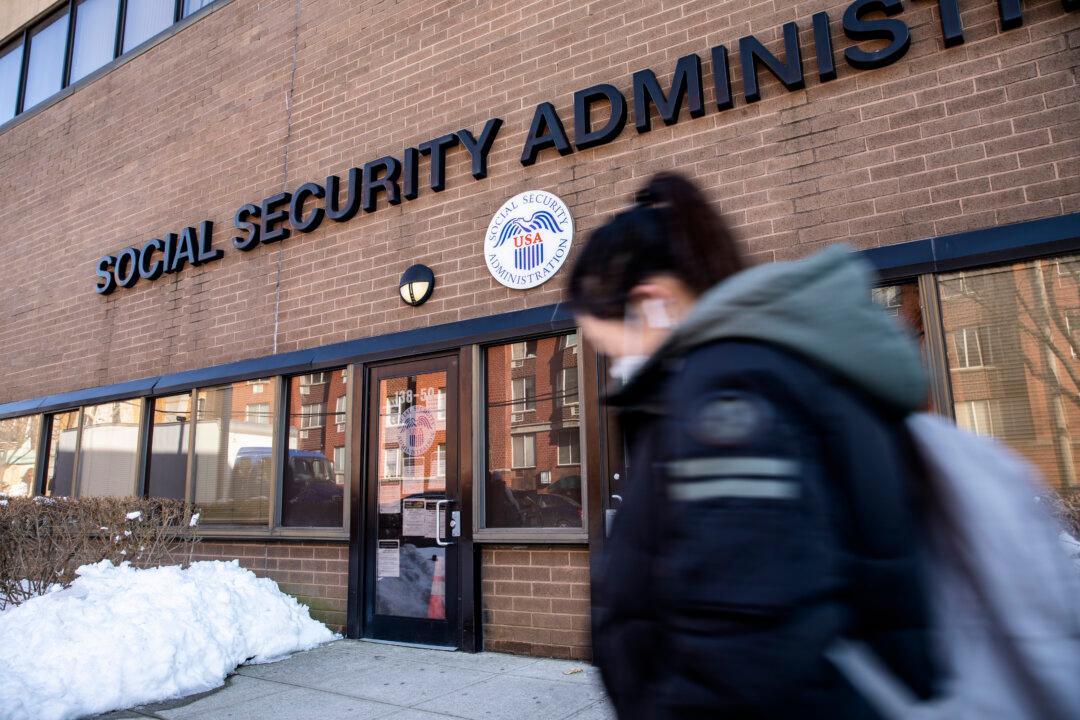Monkeypox cases in African countries have seen a massive jump, with nations in Central Africa accounting for more than eight out of 10 infections, according to the Africa Centers for Disease Control and Prevention.
The number of confirmed cases so far this year is up by more than 500 percent compared to the entirety of 2023.
Central Africa—Burundi, Chad, Equatorial Guinea, Gabon, Cameroon, the Central African Republic, the Democratic Republic of the Congo, the Republic of the Congo, and São Tomé and Príncipe—accounted for more than 85 percent of cases and more than 99 percent of deaths.
The greatest number of confirmed cases have been reported in the Democratic Republic of the Congo.
Five countries have not reported a confirmed case in the past five weeks—Cameroon, Gabon, Guinea, Rwanda, and South Africa. Cases in Liberia and Uganda have increased.
Uganda reported its first death from confirmed cases in late October. Adding in an earlier death in Kenya, only two people have died in Africa from mpox outside of Central Africa so far this year.
The Africa CDC reported on two subclades of clade 1—a and b. Children younger than age 15 are “disproportionately affected” by clade 1a, making up nearly 66 percent of sampled sequences.
The agency noted that 53 percent of clade 1b cases were among individuals ages 15 and older, which suggests “intimate and close contacts as major transmission routes.”
Vaccination plans are in place targeting six nations—Democratic Republic of the Congo, Nigeria, Rwanda, the Central African Republic, South Africa, and Cote d’Ivoire.
The agency called for intensifying efforts in active surveillance, universal testing, targeted vaccination, and holistic case management to deal with the increasing mpox cases.
Global Spread of Mpox
Meanwhile, the World Health Organization (WHO) activated its Global Health Emergency Corps in October for the first time to provide support to nations with mpox outbreaks. Set up in 2023, the Corps is a collaboration platform for nations and health emergency networks.“WHO and partners are supporting the government of the Democratic Republic of the Congo and other countries to implement an integrated approach to case detection, contact tracing, targeted vaccination, clinical and home care, infection prevention and control, community engagement and mobilization, and specialized logistical support,” Dr. Mike Ryan, executive director of WHO’s Health Emergencies Program, said.
Dr. Yukiko Nakatani, WHO assistant director-general for access to medicines and health products, said the new diagnostic test is a “significant milestone” in ensuring that testing for the virus expands in affected nations.
“Increasing access to quality-assured medical products is central to our efforts in assisting countries to contain the spread of the virus and protect their people, especially in underserved regions,” Nakatani said.
The exceptions to this trend are Sweden, Thailand, and Germany, which have detected one case each of clade 1b among travelers from Africa. India also identified a clade 1b case in a traveler from the United Arab Emirates. In Africa, all viral clades of monkeypox have been reported, according to the report.
Many cases in regions with regular monkeypox outbreaks were identified in children, raising concerns as to whether minors in the United States could be affected if the disease were to spread significantly in the country.
However, the CDC does not expect to see such risks. The agency ran a simulation of clade 1 outbreaks occurring in the United States, with the modeling also looking at impacts on children.
“The results indicate that close-contact transmission within and between households is unlikely to result in a large number of mpox clade I cases in the United States,” the agency stated.







